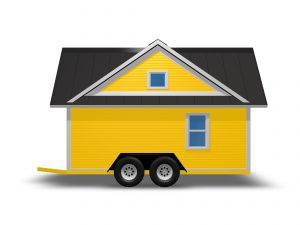 A recent study of the manufactured housing sector by the Urban Institute has pointed to three main reasons—restrictive zoning, unavailable finance, and lower appreciation—that are keeping the manufactured housing industry in the shadows despite being a highly affordable alternative to traditional housing.
A recent study of the manufactured housing sector by the Urban Institute has pointed to three main reasons—restrictive zoning, unavailable finance, and lower appreciation—that are keeping the manufactured housing industry in the shadows despite being a highly affordable alternative to traditional housing.
The study compared the costs between manufactured homes, new site-built homes and existing site-built homes. It indicated that manufactured housing was 35 to 47 percent cheaper per square foot than new or existing site-built housing, yet the number of manufactured homes shipped each year has gone from averaging 242,000 per year between 1977 and 1993 to just 92,500 units in 2017, despite being much higher in quality than the ones available in the 1990s.
According to the study, unavailability of financing was a key factor that affected the manufactured housing sector. In 2016, only 17 percent of new manufactured homes shipped were titled as real property, while others were financed through chattel loans. In most states, to obtain a mortgage loan, the manufactured home must be affixed to a permanent foundation on land owned by the manufactured home’s owner.
However, many people who owned their own land and purchased a manufactured home between 2001 and 2010 took out a chattel loan despite their theoretical ability to apply for a mortgage. Citing The Consumer Financial Protection Bureau (CFPB), the study said that 65 percent of this group used chattel loans for two reasons: First, it was an easier transaction with lower costs at origination, often arranged in conjunction with the home purchase. Second, manufactured home loans tend to be for smaller amounts, for which mortgage financing is difficult to secure. These factors and the higher costs to consumers for chattel lending increased the price of manufactured homes and in turn, affected their demand.
Restrictive zoning was another factor, the study found, that was keeping buyers from owning these homes, that include trailers and tiny homes. The study indicated that approximately 34 percent of new manufactured homes were in communities, while the rest were on privately owned land. Restrictive zoning ordinances affected both, making it difficult to build new manufactured housing communities, particularly in areas with good schools, jobs, and public transportation, while driving up the land costs.
Finally, the study said that lower appreciation, compared with site-built homes also affected their demand despite manufactured homes having lower initial costs. Much of the appreciation in single-family site-built home values was because of the appreciation of land, which has, on average, appreciated 2.35 times the rate of the structure since 2000.

 theMReport.com Your trusted source for mortgage banking news
theMReport.com Your trusted source for mortgage banking news








